The DBpedia ontology is the heart of DBpedia. Having started as a manually created ontology based on the most commonly used infoboxes within Wikipedia in 2008, it soon evolved into a successful crowd-sourcing effort resulting in a shallow cross-domain ontology. The DBpedia community is continuously contributing to the DBpedia ontology schema and the DBpedia infobox-to-ontology mappings by actively using the DBpedia Mappings Wiki. Daily snapshots of these manually created specifications are automatically made available on the DBpedia Databus. The monthly DBpedia dataset release is based on the latest snapshot available at point of time the dataset creation starts.
The ontology currently covers 768 classes which form a subsumption hierarchy and are described by 3000 different properties. The DBpedia Ontology currently contains about 4,233,000 instances. The table below lists the number of instances for several classes within the ontology:
| Class | Instances |
| Resource (overall) | 4,828,418 |
| Place | 967,491 |
| Person | 1,592,912 |
| Work | 552,115 |
| Species | 190,369 |
| Organisation | 317,867 |
| Other | 1,207,664 |
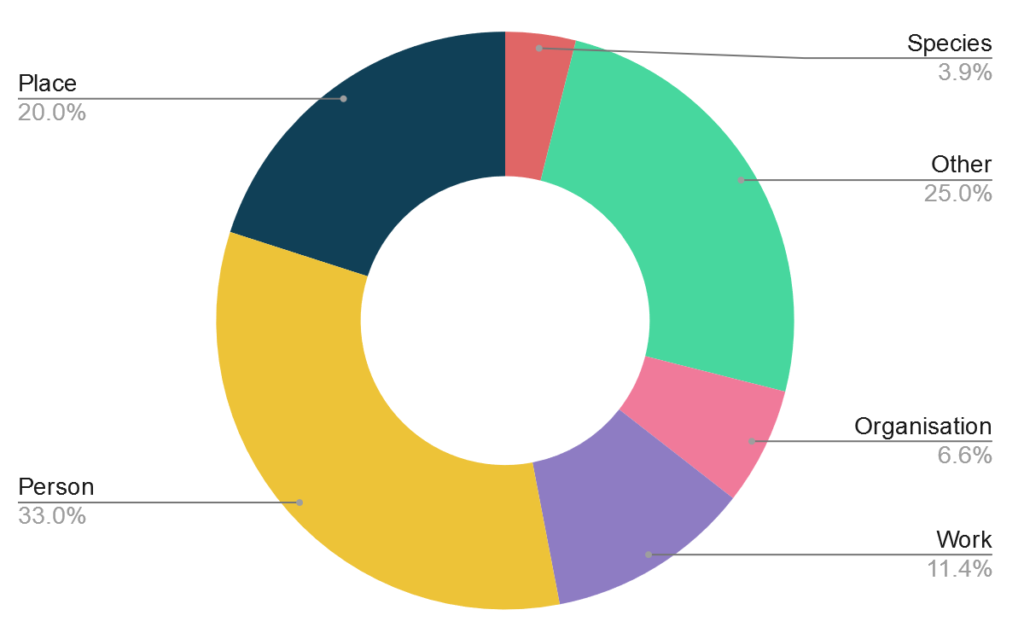
Access the DBpedia Ontologies
Development ontology download
Get the latest ontology development version from the Databus. It is generated every time changes in the mappings Wiki have been made and is available in multiple formats. An overview over of the latest development version is given by DBpedia Archivo.
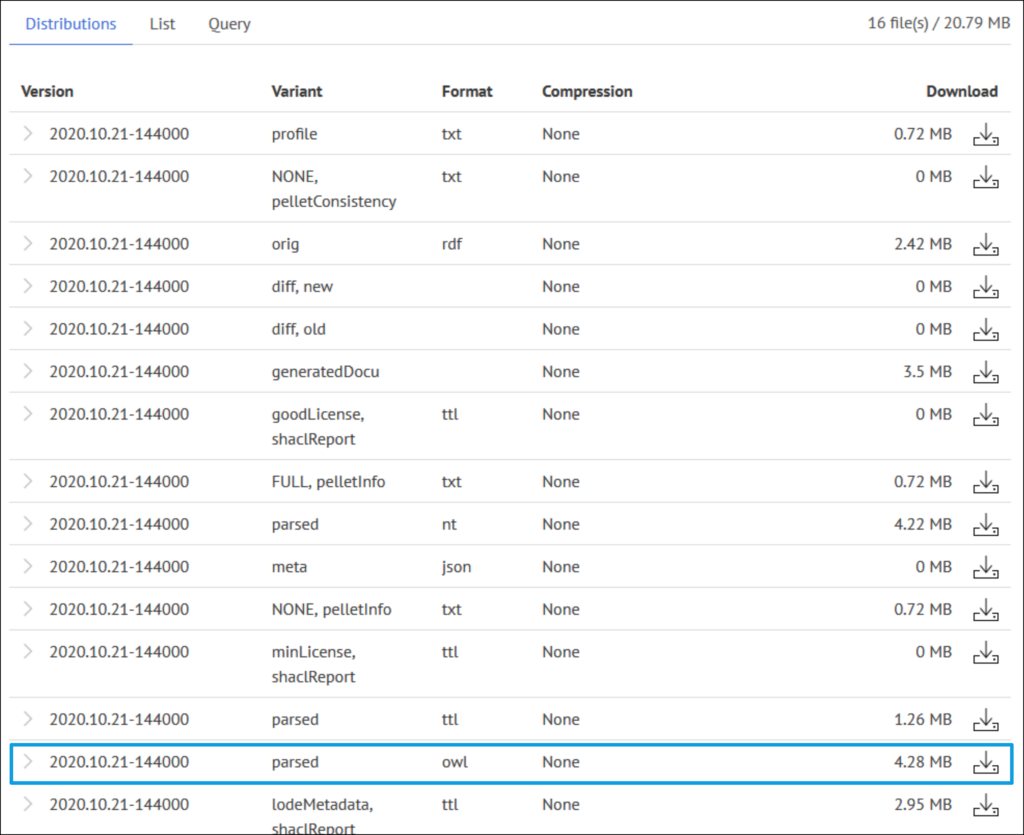
SPARQL endpoint and dump files
The DBpedia Ontology can also be queried via the DBpedia SPARQL endpoint. It serves the ontology version of the corresponding DBpedia release loaded in the same SPARQL endpoint. Data relevant to the ontology served from the SPARQL endpoint can be downloaded also as dump files:
- Schema:
2. Instance Data:
DBpedia Ontology A-Box RDF type statements
DBpedia Ontology A-Box RDF object relations
DBpedia Ontology A-Box RDF literal facts
DBpedia Ontology A-Box RDF specific properties (normalized units)
| Interactive hierarchy and instance dashboard |
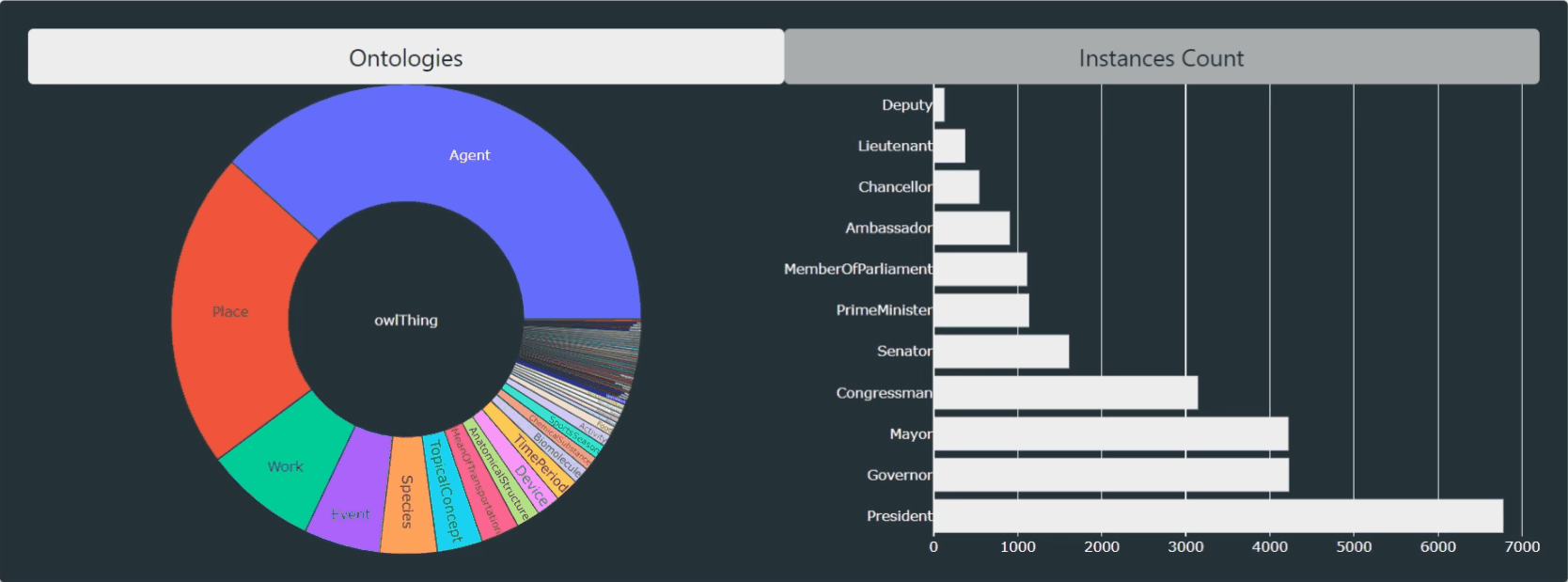 |
| Linked Data interface |
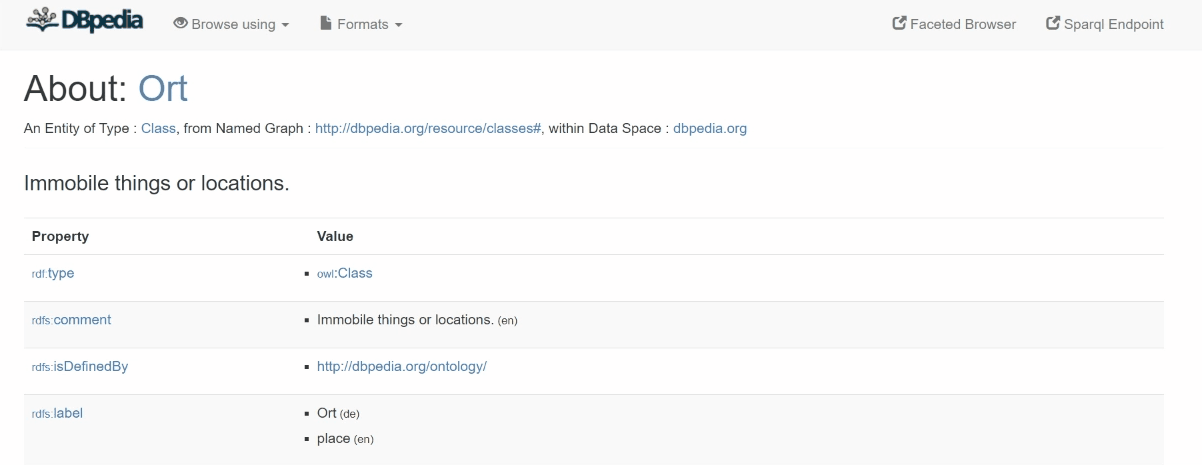 |
| OpenLink faceted browser |
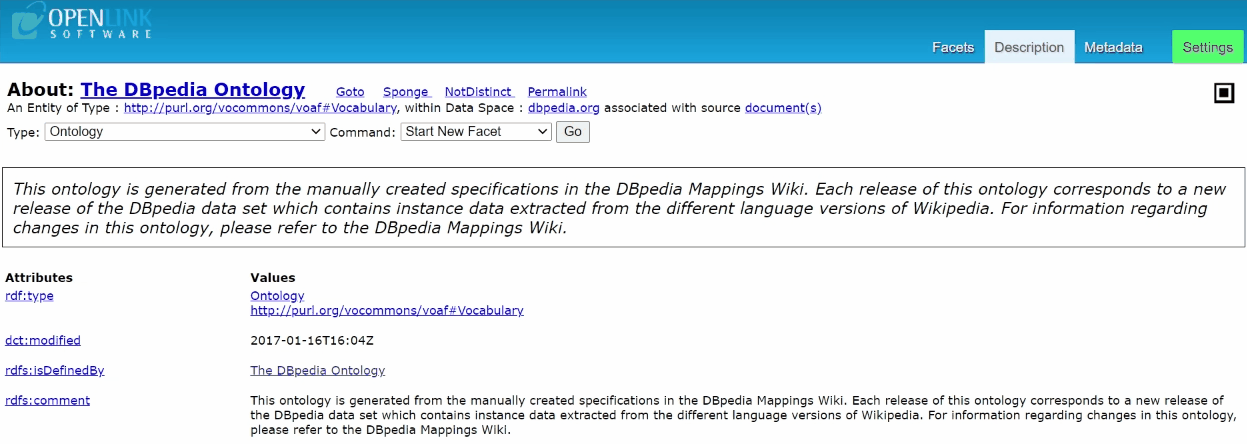 |
| LodLive browser |
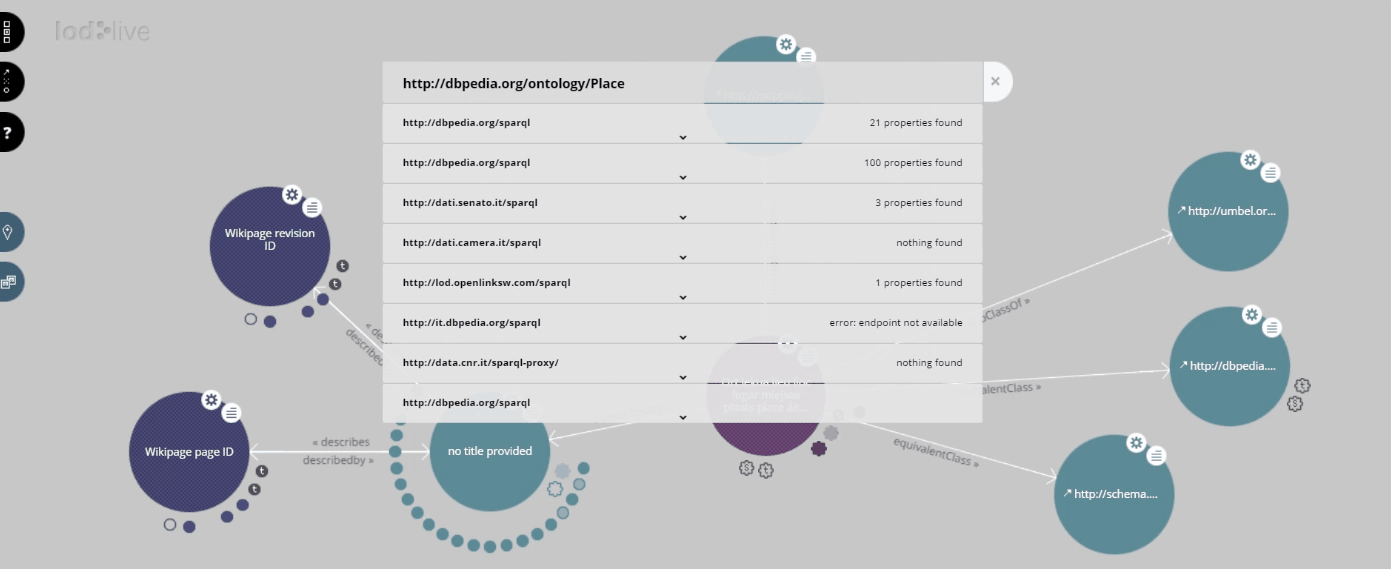 |
| Mappings Wiki |
 |
Ontology Evolution
With the DBpedia 3.2 release, we introduced a new infobox extraction method based on hand-generated mappings of Wikipedia infoboxes to the DBpedia ontology. The mappings defined fine-granular rules on how to parse infobox values. The mappings also addressed weaknesses in the Wikipedia infobox system, like having different infoboxes for the same class, using different property names for the same property, and not having clearly defined datatypes for property values. Therefore, the instance data within the infobox ontology is much cleaner and better structured than the infobox data within the DBpedia infobox dataset which was generated using the old infobox extraction code.
With the DBpedia 3.5 release, we introduced a public wiki for writing infobox mappings, editing existing ones as well as editing the DBpedia ontology. This allows external contributors to define mappings for the infoboxes they are interested in and to extend the existing DBpedia ontology with additional classes and properties.
Since the DBpedia 3.7 release, the ontology is a directed-acyclic graph, not a tree. Classes may have multiple superclasses, which was important for the mappings to schema.org. A taxonomy can still be constructed by ignoring all superclasses except the one that is specified first in the list and is considered the most important.
- Did you consider this information as helpful?
- Yep!Not quite ...
